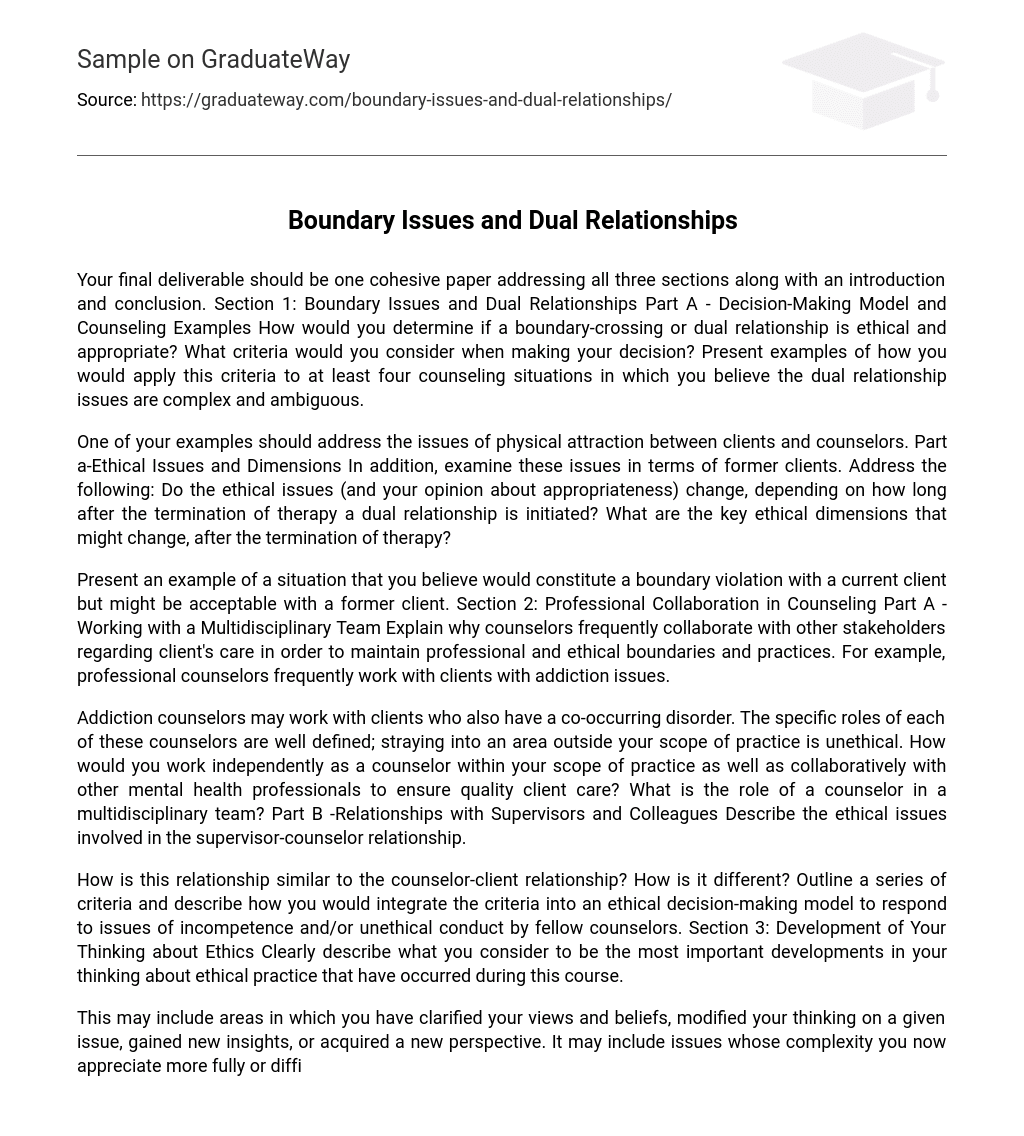Your final deliverable should be a cohesive paper that includes an introduction, three sections, and a conclusion. The first section discusses boundary issues and dual relationships. This includes a part A which focuses on the decision-making model and counseling examples. To determine if a boundary-crossing or dual relationship is ethical and appropriate, you need to consider certain criteria. In at least four complex and ambiguous counseling situations, provide examples of how you would apply this criteria.
Discussing physical attraction between counselors and clients, including former clients, is essential in addressing the ethical concerns involved. It is important to consider whether the ethical nature of these issues varies depending on the length of time that has passed since therapy concluded before a dual relationship begins. Additionally, identifying the key ethical aspects that may change after therapy has ended is crucial.
Provide a scenario that you think would be considered a violation of boundaries with a current client but could be deemed acceptable with a former client. This pertains to the section on Professional Collaboration in Counseling Part A – Working with a Multidisciplinary Team. Elaborate on the reason why counselors often collaborate with other individuals involved in a client’s care, which helps uphold professional and ethical boundaries and practices. To illustrate, professional counselors commonly assist clients dealing with addiction problems.
It is important for addiction counselors to understand the specific roles of each counselor when working with clients who have a co-occurring disorder. Maintaining ethical standards requires counselors to stay within their scope of practice and avoid venturing into areas outside their expertise. Providing quality care necessitates both independent work within one’s scope of practice and collaboration with other mental health professionals. In a multidisciplinary team, counselors contribute their expertise and work alongside other professionals to ensure optimal client care.
Regarding relationships with supervisors and colleagues, ethical issues must be taken into account in the supervisor-counselor relationship.
In what ways does this relationship resemble the counselor-client relationship and how does it differ? Provide a series of guidelines and explain how you would incorporate those guidelines into an ethical decision-making model for dealing with issues of incompetence or unethical behavior among fellow counselors. Section 3: Evolution of Your Ethical Thinking Clearly discuss the key developments in your ethical thinking that have taken place throughout this course.
The paragraph addresses the topics of gaining new insights and changing thinking on certain issues, understanding the complexity of certain matters, and grappling with difficult ethical dilemmas as a counselor. It prompts readers to reflect on their personal growth, as well as their comprehension of ethics and legal concerns. The use of specific examples is encouraged to substantiate broader statements.





